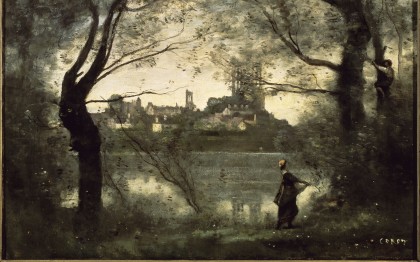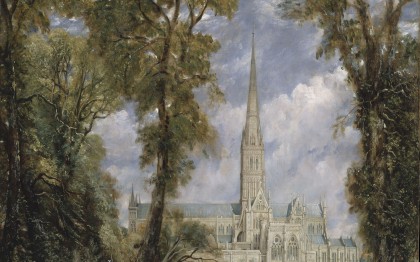In Britain, the Romanesque infatuation with the past and the erudite passion for national antiquities coincided from the 18th century onwards with the development of a typically British taste for views of ancient monuments. An interest in cathedrals quickly emerged, particularly in topographical settings. Towards 1795-1800, the young Turner painted some sweeping views of the Cathedral in watercolour, like the series on Salisbury, designed to illustrate a scholarly book on the ancient sites of Wiltshire.
Their marked interest for mediaeval architecture explains why the British were among the first to paint the great Norman sanctuaries, including Rouen Cathedral. Between 1825 and 1831 David Roberts painted several views of the monument, which at the time had no equivalent in French painting.
Gradually, the cathedral moved from being the subject of urban views towards becoming a countryside motif. In his many views of Salisbury Cathedral, Constable constantly favoured angles from which the church could be painted in a natural setting. The influence of this artist, much admired by French Romantics, can also be discerned in the great Vue générale de Rouen by Français Paul Huet.
This taste for all things mediaeval developed in turn in France to become one of the great foundations of Romanticism. It underpins the work of an isolated genius such as Corot, who returned on several occasions to the great Gothic church. From then on, the modern landscape school began to appropriate this highly familiar silhouette, which came to replace the familiar scene of the eternal and distant ancient ruin.


